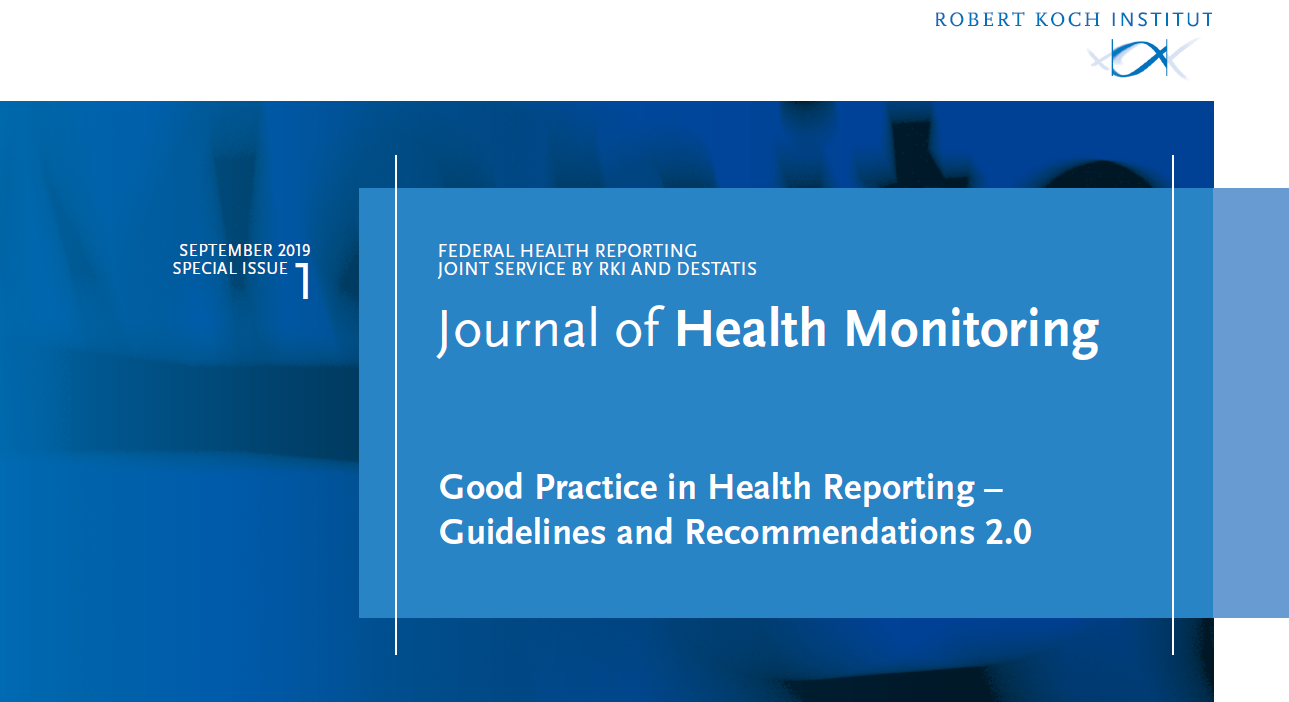Approved and made available the Second edition of Good practice in Health Reporting guidelines

Prevention is an essential component of an effective health system. Whether targeted at individuals or populations, interventions aim to enhance health status and maintain a state of low risk for diseases, disorders or conditions, that is, to prevent their occurrence through programs of information, immunization, screening or monitoring. Over recent decades, there have been a number of public health success stories with increasing coverage of populations in terms of immunization and screening as well as achievements in reducing accidents and lowering smoking and drinking rates through specific policy measures. Public health challenges remain as obesity rates both among adults and children risk an explosion of related illnesses and conditions if left unchecked.
Health reporting provides information to politicians and the public about the health, illnesses, health risks and mortality of a spatially and temporally defined population. One of its main tasks is interpreting data from different data sources. As a steering instrument in health policy, health reporting acts as an empirical basis with which to make rationally justifiable policy decisions. Furthermore, it accompanies health policy processes and enables public participation. As such, it is embedded within a particular political discourse. Reporting systems at the local, state and national level are subject to the respective legal and political frameworks. This means that health reporting:
- Provides a description of the health of the population. It takes into account the unequal social and regional distribution of health risks and potentials for disease prevention, and demonstrates areas at the national, state and local level where action needs to be taken.
- Accounts for gender, migration and any other living conditions that influence the health of the population or selected population groups.
- Acts as a foundation for the cross-departmental planning of disease prevention, health promotion and care provision, and can be used to evaluate health policy measures.
- Involves the continuous collection of data about the health of a population and identifying possible changes in health at an early stage. Therefore, it can be used to make timely health policy decisions.
- Is not only aimed at experts and decision makers from politics and administration but also at the general public.
- Promotes the process of forming public opinion by providing information and enabling people to participate in drawing up health policy objectives.
- Supports the civil society concern of participation.
The boards of the German Society for Social Medicine and Prevention and the German Society for Epidemiology have approved the second edition of Good Practice in Health Reporting that complements Good Practice in Health Reporting complements Guidelines and Recommendations for Ensuring Good Epidemiological Practice and Good Practice in Secondary Data Analysis by providing additional, albeit central, recommendations for health reporting.